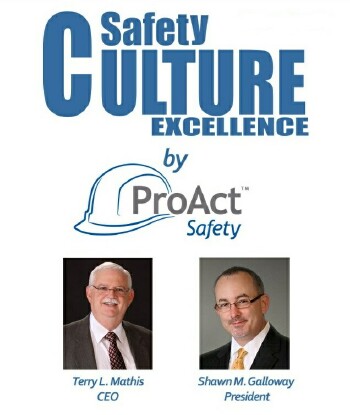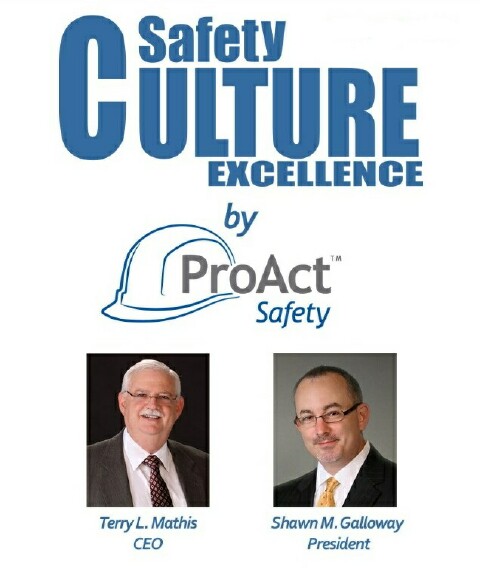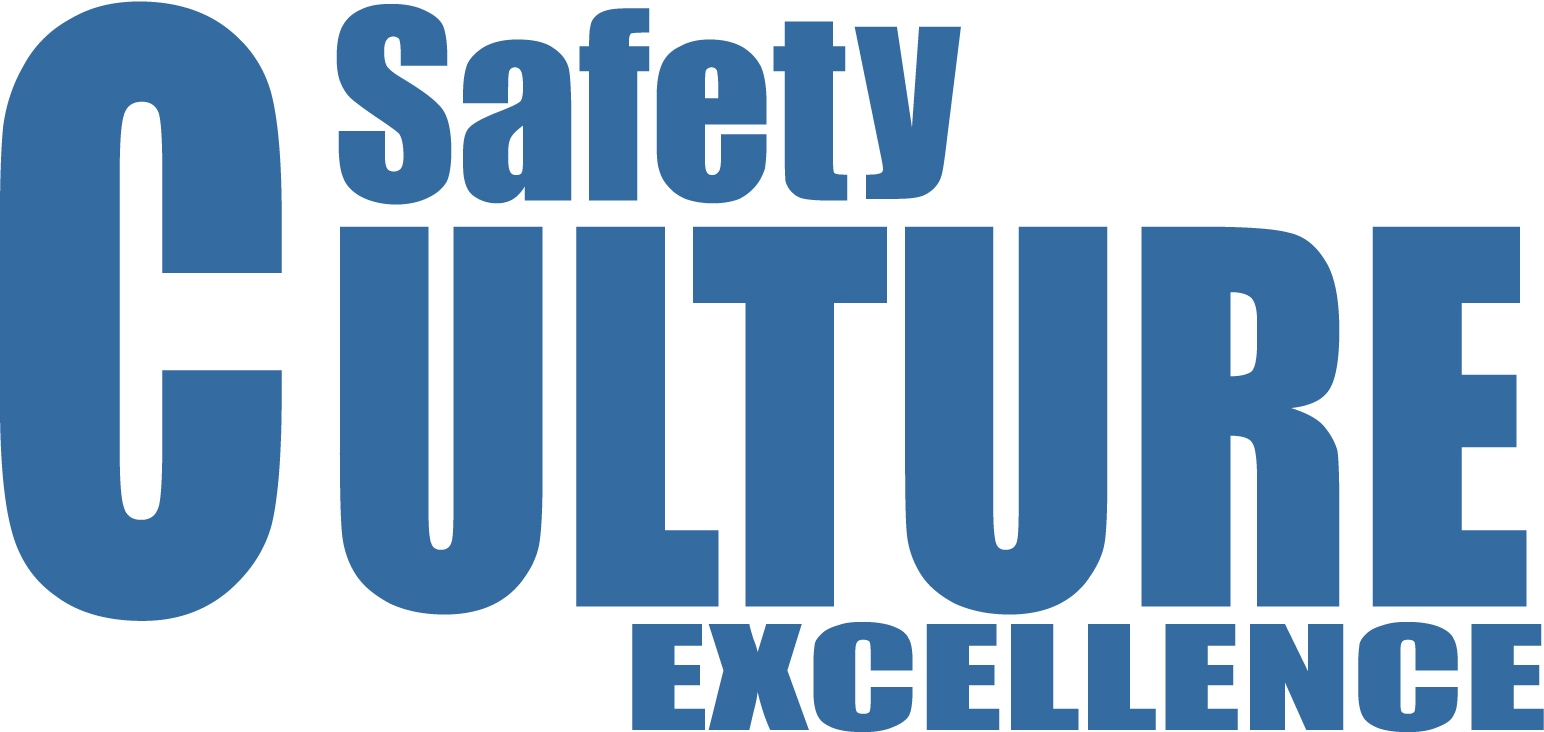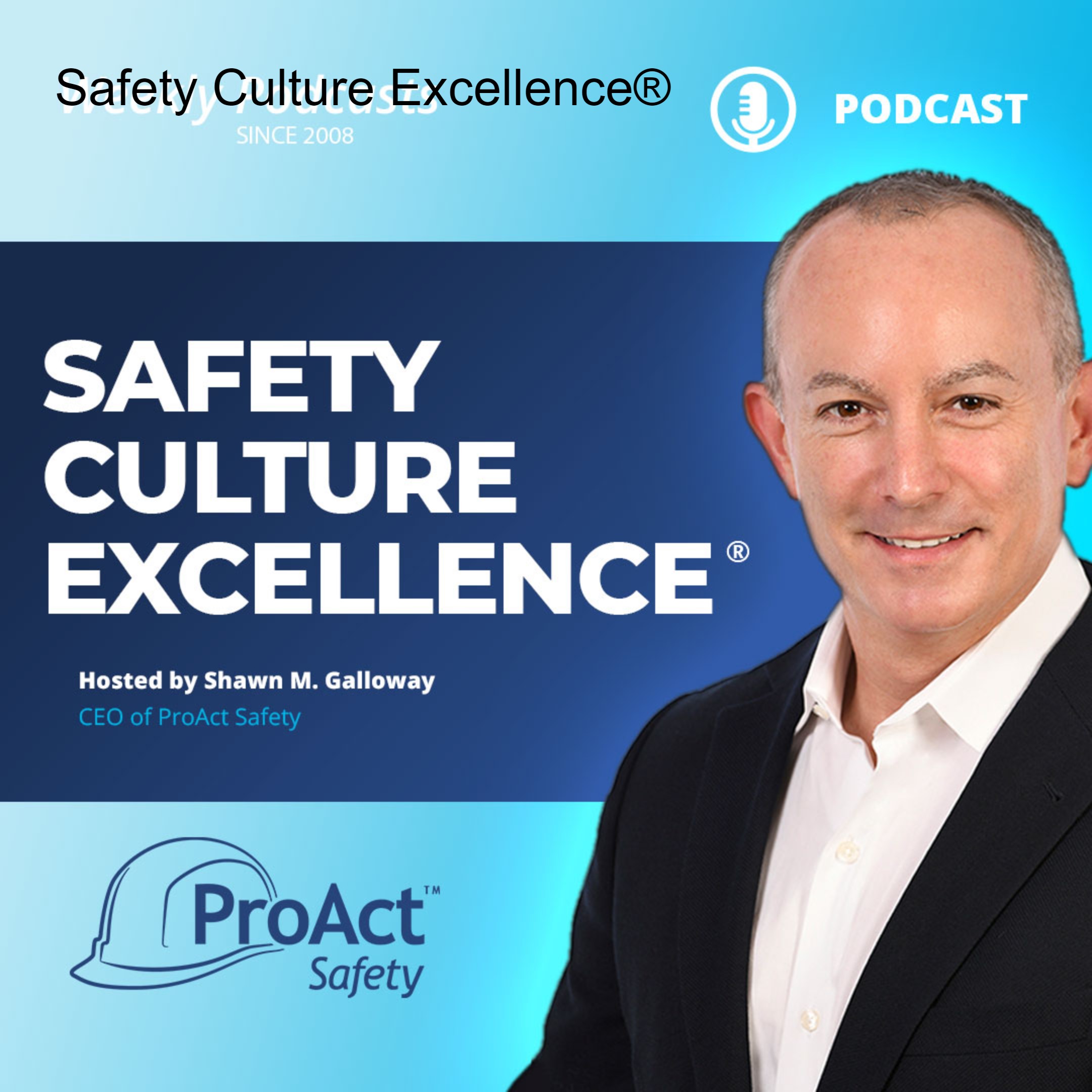Episodes

Wednesday Oct 08, 2014
Safety: Seeing or Thinking?
Wednesday Oct 08, 2014
Wednesday Oct 08, 2014
Have you ever seen the puzzle in the comics that ask you to tell the differences between the top and bottom picture. At first glance, they look the same. But, as you look closer, you begin to find minute differences. If the puzzle didn’t tell you the exact number of differences, you might think you had found them all before recognizing some of them. The human brain automatically looks for differences, things not the way they should be, but if the differences are not big and obvious they can be missed.
Safety is dependent on these two kinds of recognition as well. Some risks are big and obvious; others are subtle and take time and concentration to discern. Among the most difficult risks to accurately discern are low-probability risks, those that don’t result in accidents always or regularly.
In accident investigations, we have often already determined the risk involved in the accident and assume that it would have been as obvious to the worker(s) injured as it was to the readers of the report. That is seldom so. If the risk had been obvious, the worker would have taken precautions barring other factors that might have influenced or limited the decision. One of the last frontiers of safety involves helping workers and work groups to identify the subtle risks that don’t automatically catch our attention.
-Terry L. Mathis
For more insights, visit www.ProActSafety.com
Terry L. Mathis is the founder and CEO of ProAct Safety, an international safety and performance excellence firm. He is known for his dynamic presentations in the fields of behavioral and cultural safety, leadership, and operational performance, and is a regular speaker at ASSE, NSC, and numerous company and industry conferences. EHS Today listed Terry as a Safety Guru in ‘The 50 People Who Most Influenced EHS in 2010, 2011 and 2012-2013. He has been a frequent contributor to industry magazines for over 15 years and is the coauthor of STEPS to Safety Culture Excellence, 2013, WILEY.

Monday Aug 18, 2014
350 - Evolving Your Safety Culture Elements That Matter Most
Monday Aug 18, 2014
Monday Aug 18, 2014
Greetings everyone, this podcast recorded while in Eunice, LA. I’d like to share an article I wrote that was published in the July 2014 edition of OH&S Magazine. The published article can either be found on the magazine’s website or under Insights at www.ProActSafety.com.
I hope you enjoy the podcast this week. If you would like to download or play on demand our other podcasts, please visit the ProAct Safety’s podcast website at: http://www.safetycultureexcellence.com. If you would like access to archived podcasts (older than 90 days – dating back to January 2008) please visit www.ProActSafety.com/Store. For more detailed strategies to achieve and sustain excellence in performance and culture, pick up a copy of our book, STEPS to Safety Culture Excellence - http://proactsafety.com/insights/steps-to-safety-culture-excellence
Have a great week!
Shawn M. Galloway
ProAct Safety

Monday Jul 28, 2014
347 - The Confrontation Calamity
Monday Jul 28, 2014
Monday Jul 28, 2014
Greetings everyone, this podcast recorded while in Toronto, ON. I’d like to share an article Terry Mathis wrote that was published June 2014 edition of EHS Today Magazine. The published article can either be found on the magazine’s website or under Insights at www.ProActSafety.com.
I hope you enjoy the podcast this week. If you would like to download or play on demand our other podcasts, please visit the ProAct Safety’s podcast website at: http://www.safetycultureexcellence.com. If you would like access to archived podcasts (older than 90 days – dating back to January 2008) please visit www.ProActSafety.com/Store. For more detailed strategies to achieve and sustain excellence in performance and culture, pick up a copy of our book, STEPS to Safety Culture Excellence - http://proactsafety.com/insights/steps-to-safety-culture-excellence
Have a great week!
Shawn M. Galloway
ProAct Safety

Monday Jun 23, 2014
342 - Is Winning or Losing a Safety Culture Habit?
Monday Jun 23, 2014
Monday Jun 23, 2014
Greetings everyone, this podcast recorded while in Auburn Hills, MI. I’d like to share an article I wrote that was published May 2014 in Occupational Health & Safety Magazine. The published article can either be found on the magazine’s website or under Insights at www.ProActSafety.com.
I hope you enjoy the podcast this week. If you would like to download or play on demand our other podcasts, please visit the ProAct Safety’s podcast website at: http://www.safetycultureexcellence.com. If you would like access to archived podcasts (older than 90 days – dating back to January 2008) please visit www.ProActSafety.com/Store. For more detailed strategies to achieve and sustain excellence in performance and culture, pick up a copy of our book, STEPS to Safety Culture Excellence - http://proactsafety.com/insights/steps-to-safety-culture-excellence
Have a great week!
Shawn M. Galloway
ProAct Safety

Monday Jun 16, 2014
341 - Who Should Perform Behavior-Based Safety Observations?
Monday Jun 16, 2014
Monday Jun 16, 2014
Greetings everyone, this podcast recorded while in Galveston, TX. I’d like to share an article I wrote that was published May 2014 in BIC Magazine. The published article can either be found on the magazine’s website or under Insights at www.ProActSafety.com.
I hope you enjoy the podcast this week. If you would like to download or play on demand our other podcasts, please visit the ProAct Safety’s podcast website at: http://www.safetycultureexcellence.com. If you would like access to archived podcasts (older than 90 days – dating back to January 2008) please visit www.ProActSafety.com/Store. For more detailed strategies to achieve and sustain excellence in performance and culture, pick up a copy of our book, STEPS to Safety Culture Excellence - http://proactsafety.com/insights/steps-to-safety-culture-excellence
Have a great week!
Shawn M. Galloway
ProAct Safety

Wednesday May 28, 2014
Success vs. Vulnerability
Wednesday May 28, 2014
Wednesday May 28, 2014
The only problem with a successful safety effort is success. Success can seriously damage the organizational and individual sense of vulnerability necessary for future success. When no accidents happen for a long enough period of time, people can drop their guard. Celebrations of success that don’t include admonishments for renewed effort can lead to workers who are too busy patting themselves on the back to be safe. The age old, “it isn’t going to happen to me” mentality begins to grow and minds start to think their bodies are bulletproof.
Some of the best-performing organizations in safety are the ones where workers come to work each day with a full realization that accidents are possible and waiting. No one lowers their guard because they know the dangers are still there. There is a healthy respect for the possibility of a tragedy and everyone is standing guard to prevent it.
Vulnerability need not reach the panic level, but also cannot be allowed to go completely away, even for moments. Just like disease, accidents are best addressed through early detection and management of risk factors; not through reactive measures to control the damage. Can your organization celebrate success without losing its healthy sense of vulnerability?
-Terry L. Mathis
For more insights, visit www.ProActSafety.com
Terry L. Mathis is the founder and CEO of ProAct Safety, an international safety and performance excellence firm. He is known for his dynamic presentations in the fields of behavioral and cultural safety, leadership, and operational performance, and is a regular speaker at ASSE, NSC, and numerous company and industry conferences. EHS Today listed Terry as a Safety Guru in ‘The 50 People Who Most Influenced EHS in 2010, 2011 and 2012-2013. He has been a frequent contributor to industry magazines for over 15 years and is the coauthor of STEPS to Safety Culture Excellence, 2013, WILEY.

Wednesday May 14, 2014
Starting vs. Stopping
Wednesday May 14, 2014
Wednesday May 14, 2014
Is safety excellence a matter of stopping risks or starting precautions? Should we focus on the “thou shalt nots” of safety, or encourage positive action? This topic directly impacts the question we have discussed before, “Is safety excellence a matter of achieving success or avoiding failure?” But beyond that philosophical point, let’s discuss the tools used for starting and stopping human behavior and their side effects.
The ultimate behavioral stopping tool is punishment. In the behavioral sciences, anything that tends to stop behavior is consider punishment and what makes it effective is the timing and probability. Negative consequences for behavior that are certain and timely tend to stop, or “extinguish” the behavior. But punishment does not automatically start another behavior in its place. Artificially-imposed punishment can also damage relationships and culture. It can be important to stop certain behaviors that present unacceptable risks or damage safety culture, and punishment might be the right tool for that job.
Starting tools for behavior include positive reinforcement and motivation. If the safety challenge is getting workers to identify risks, take precautions or participate in safety activities, these starting tools can be invaluable. Starting tools also are relationship and culture builders. Workers who help each other start better practices and improve performance tend to strengthen the bonds between themselves.
Determining the right tools for safety excellence involves accurately identifying exactly what behaviors need to be stopped or started. An effective safety strategy should include these distinctions.
-Terry L. Mathis
Terry L. Mathis is the founder and CEO of ProAct Safety, an international safety and performance excellence firm. He is known for his dynamic presentations in the fields of behavioral and cultural safety, leadership, and operational performance, and is a regular speaker at ASSE, NSC, and numerous company and industry conferences. EHS Today listed Terry as a Safety Guru in ‘The 50 People Who Most Influenced EHS in 2010, 2011 and 2012-2013. He has been a frequent contributor to industry magazines for over 15 years and is the coauthor of STEPS to Safety Culture Excellence, 2013, WILEY.

Wednesday Apr 16, 2014
The Confrontation Calamity
Wednesday Apr 16, 2014
Wednesday Apr 16, 2014
The emphasis on the concept of confrontation in safety is epidemic. Consultants, books and articles taut the virtue of teaching workers to confront each other over safety issues. They claim that the willingness and ability to confront may be the key competency of safety. They argue that it must become unacceptable to see a risk being taken and not confront the individual taking the risk.
The basis of this misguided concept goes back to two core misconceptions of safety thinking, (i.e. the idea that the goal of safety is to fail less and that all risk-taking is a matter of worker choice). When one worker sees another being bad there must be a confrontation to make the worker less bad. The worker taking a risk simply made a bad choice and confrontation will result in less-bad decisions in the future. The truth is that safety excellence is about achieving success, not simply avoiding failure and that there are organizational influences that impact workers’ decisions that need to be discovered and addressed if lasting change is to be made.
The alternative to the concept of confrontation is the concept of coaching. Coaching is a way to achieve success rather than simply avoid failure. It involves workers building on each other’s strengths rather than simply trying to correct their weaknesses. It is built upon a vision of success in which everyone helps each other reach a goal. It necessitates a vision of success and helps to identify organizational influences on workers’ behavioral choices.
Confrontation weakens relationships and culture and seldom results in lasting change. Coaching builds relationships and culture and almost always results in improved performance. Workers listen to their allies differently than they listen to their critics. Confrontation creates either enmity within the safety culture or avoidance behavior that has the appearance of confrontation without the reality. Either damages the very fabric of what it is supposed to improve.
-Terry L. Mathis
Terry L. Mathis is the founder and CEO of ProAct Safety, an international safety and performance excellence firm. He is known for his dynamic presentations in the fields of behavioral and cultural safety, leadership, and operational performance, and is a regular speaker at ASSE, NSC, and numerous company and industry conferences. EHS Today listed Terry as a Safety Guru in ‘The 50 People Who Most Influenced EHS in 2010, 2011 and 2012-2013. He has been a frequent contributor to industry magazines for over 15 years and is the coauthor of STEPS to Safety Culture Excellence, 2013, WILEY.

Monday Feb 17, 2014
328 - Caring More Deeply About Safety
Monday Feb 17, 2014
Monday Feb 17, 2014
Greetings everyone, this podcast recorded while in Clinton, TN. I’d like to share an article Terry L. Mathis wrote that was published January 2014 in EHS Today Magazine. The published article can either be found on the magazine’s website or under Insights at www.ProActSafety.com.
I hope you enjoy the podcast this week. If you would like to download or play on demand our other podcasts, please visit the ProAct Safety’s podcast website at: http://www.safetycultureexcellence.com. If you would like access to archived podcasts (older than 90 days – dating back to January 2008) please visit www.ProActSafety.com/Store. For more detailed strategies to achieve and sustain excellence in performance and culture, pick up a copy of our book, STEPS to Safety Culture Excellence - http://proactsafety.com/insights/steps-to-safety-culture-excellence
Have a great week!
Shawn M. Galloway
ProAct Safety

Monday Jan 06, 2014
323 - What should you stop doing in safety?
Monday Jan 06, 2014
Monday Jan 06, 2014
Greetings everyone, this podcast recorded while in Mineral Wells, WV. I’d like to share an article I wrote, published October 2013 in BIC Magazine. The published article can either be found on the magazine’s website or under Insights at www.ProActSafety.com.
I hope you enjoy the podcast this week. If you would like to download or play on demand our other podcasts, please visit the ProAct Safety’s podcast website at: http://www.safetycultureexcellence.com. If you would like access to archived podcasts (older than 90 days – dating back to January 2008) please visit www.ProActSafety.com/Store. For more detailed strategies to achieve and sustain excellence in performance and culture, pick up a copy of our book, STEPS to Safety Culture Excellence - http://proactsafety.com/insights/steps-to-safety-culture-excellence
Have a great week!
Shawn M. Galloway
ProAct Safety

